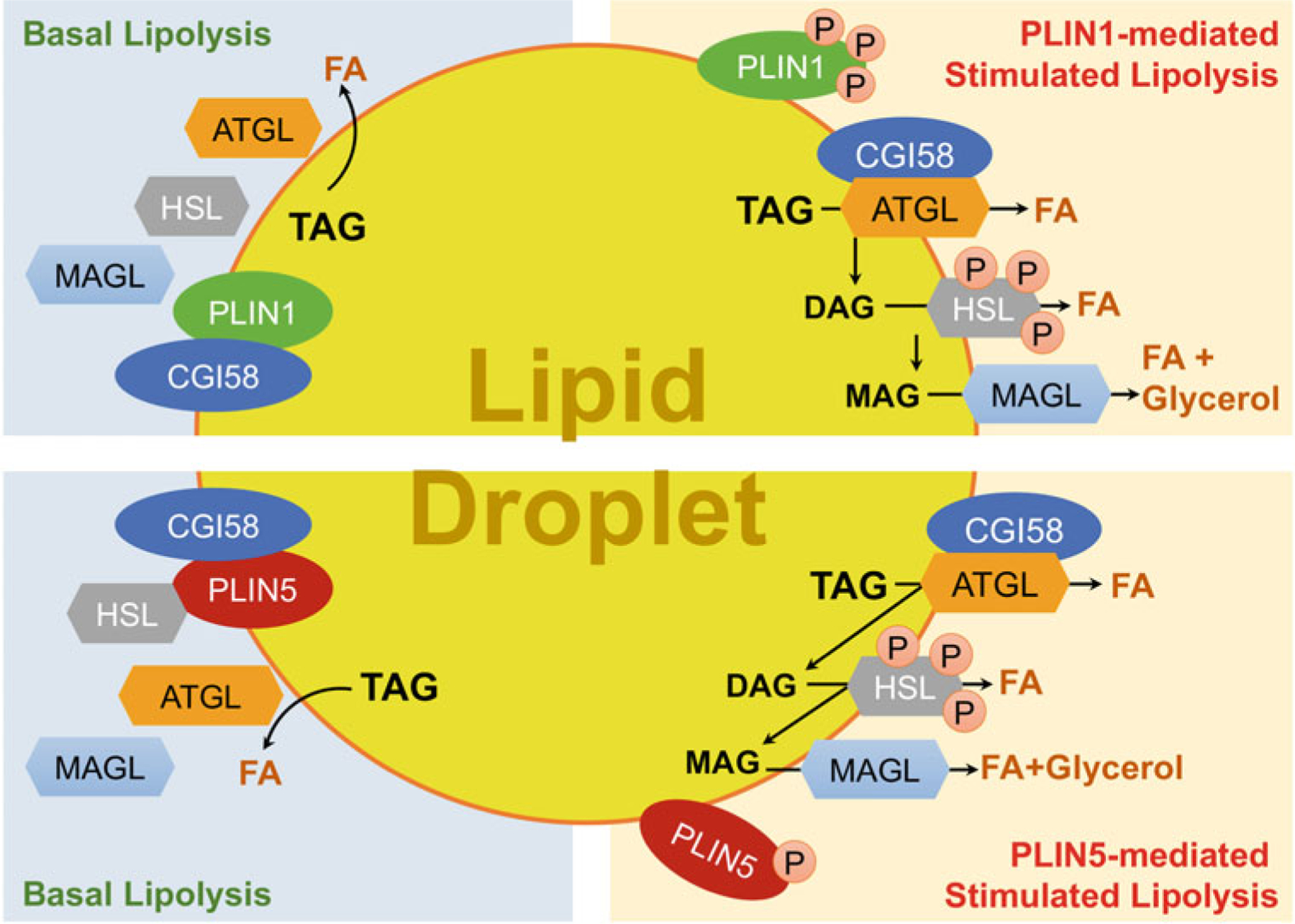Fig. 13.2.

Proposed model for CGI-58 regulation of cytosolic lipid droplet lipolysis. Lipolysis regulation differs between basal and stimulated conditions. Under the basal conditions, CGI-58 binds to PLIN1 in adipocytes or PLIN5 in oxidative nonadipocytes, preventing its interaction with ATGL. Thus, the lipolytic activity of ATGL is limited. After stimulation, perilipins are phosphorylated, resulting in the dissociation of CGI-58 from perilipins. CGI-58 then interacts with ATGL and substantially activates ATGL’s TAG hydrolase activity to stimulate lipolysis, producing DAGs and fatty acids (FAs). The DAGs are then hydrolyzed to produce MAGs and FAs by HSL that was phosphorylated and recruited to the LDs during the lipolytic stimulation. Finally, the MAGs are hydrolyzed by MAGL to release the last fatty acyl chain from the glycerol backbone of a TAG molecule
